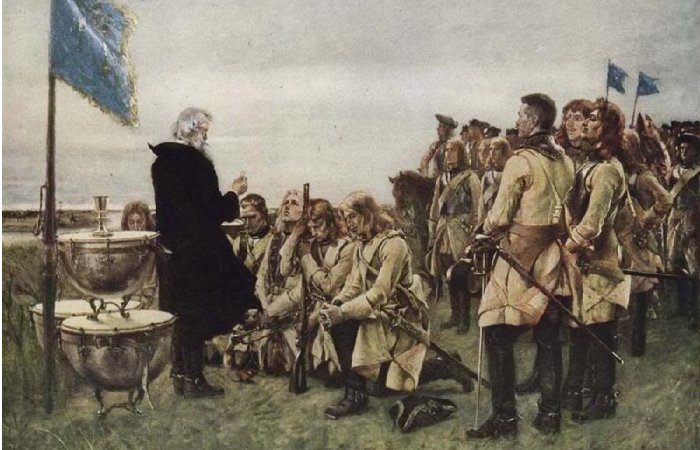On This Day In History: Battle Of Fraustadt – One Of The Most One-Sided Swedish Victories – On Feb 3, 1706
AncientPages.com - On February 3, 1706, the Battle of Fraustadt was fought between Sweden, Saxony-Poland, and their Russian allies near Fraustadt (present-day Wschowa) on Poland's western border.
Thanksgiving after the victory of Fraustadt – Gustaf Cederström. Public Domain
It was one of Sweden's most significant victories in the Great Northern War ((1700–1721), a conflict in which a coalition led by the Tsardom of Russia successfully contested the supremacy of the Swedish Empire in Central, Northern, and Eastern Europe.)
A Swedish army of 10 000 men commanded by Carl Gustaf Rehnsköld - a Swedish Field Marshal under King Karl XII of Sweden - attacked and almost annihilated an allied Russian and Saxon army 18,000 strong under Johann Matthias von Schulenburg. The Saxon force consisted primarily of French, Bavarian, and Swiss mercenaries with a core of Saxons.
The allied army had been deployed carefully. The army was lined up between two villages, which protected its flanks. On each side, an infantry battalion was turned to face outwards in case the Swedes managed a cavalry attack.
Swedish tactics emphasized the value of the attack on the charge. Muskets of the period might have been able to fire five or six volleys at incoming infantry, but most of them would be at extremely long range for the musket.
The Swedish cavalry attacked both flanks, drove off the allied cavalry, and attacked the allied center. Meanwhile, the Swedish infantry - that relied more on the sword than the musket - advanced on the charge, receiving three rounds of artillery and one of musket fire before reaching the allied lines.
The Russians and Saxons were effectively surrounded. After fifteen minutes of combat, the allied lines broke and attempted to flee. The result was a massacre.
Between 7,000 and 8,000 men were killed, many after surrendering. In all, over 14,000 men were killed or captured at Fraustadt. Charles XII could invade Saxony and even briefly depose Augustus of Poland. It was the high point of the war for the Swedes.
According to the Swedish calendar, the battle took place on February 3; according to the Gregorian calendar (used by the Saxons), February 13, and the Julian calendar - it took place on February 2.
AncientPages.com
Expand for references




















